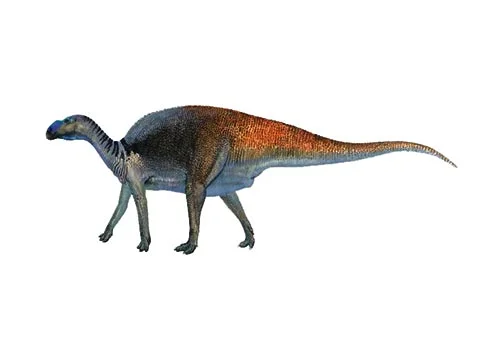Muttaburrasaurus (Muttaburra lizard)

Mut-tah-buh-rah-sore-us
Alan Bartholomai & Ralph. E. Molnar - 1981
Herbivore
Estimated 8 meters long
Euornithopod
M. langdoni (type)
Australia, Queensland - Mackunda Formation. Possibly also New South Wales - Lightning Ridge
Early Cretaceous, 112-99 million years ago
Muttaburrasaurus Facts
Muttaburrasaurus was a large herbivorous dinosaur that lived during the early Cretaceous period, around 112-99 million years ago. It was a member of the iguanodontid family, a group of ornithopod dinosaurs that were characterized by their toothless beaks, large hind legs, and thumb spikes.
Muttaburrasaurus was discovered in 1963 by Doug Langdon, a young boy from Muttaburra, a small town in central Queensland, Australia. The first fossils of Muttaburrasaurus included a nearly complete skull, which was unusual because skulls are often the most fragile and easily destroyed part of a dinosaur’s anatomy. This skull is still one of the best-preserved iguanodontid skulls ever found.
Muttaburrasaurus was a relatively large dinosaur, measuring up to 8 meters (26 feet) long and weighing around 2,000 kilograms (4,400 pounds). It had a long, flat, duck-like beak that it used to nip off vegetation, and a battery of cheek teeth that it used to grind its food. Its hind legs were longer and more robust than its forelimbs, indicating that it was bipedal and could move quickly on two legs. However, it likely also had the ability to walk on all fours when it needed to.
One of the most distinctive features of Muttaburrasaurus was its cranial crest, which was made of solid bone and likely used for display and communication purposes. The crest varied in shape and size between individuals, with some having a low, rounded crest and others having a taller, more pointed crest.
Overall, Muttaburrasaurus is an important dinosaur for paleontologists because it is one of the most complete iguanodontid skeletons ever found. Its well-preserved skull has provided valuable insights into the evolution and biology of this group of dinosaurs.



